
Life sciences company Thermo Fisher (NYSE: TMO) reported revenue ahead of Wall Street’s expectations in Q2 CY2025, with sales up 3% year on year to $10.86 billion. Its non-GAAP profit of $5.36 per share was 2.3% above analysts’ consensus estimates.
Is now the time to buy Thermo Fisher? Find out by accessing our full research report, it’s free.
Thermo Fisher (TMO) Q2 CY2025 Highlights:
- Revenue: $10.86 billion vs analyst estimates of $10.69 billion (3% year-on-year growth, 1.6% beat)
- Adjusted EPS: $5.36 vs analyst estimates of $5.24 (2.3% beat)
- Operating Margin: 16.9%, in line with the same quarter last year
- Free Cash Flow Margin: 10.2%, down from 15.7% in the same quarter last year
- Organic Revenue rose 2% year on year (-1% in the same quarter last year)
- Market Capitalization: $161.4 billion
“Our exceptional team continues to execute at a high level, enabling customer success while navigating the macroenvironment. The agility of our organization, powered by the PPI Business System, allowed us to effectively adapt to current market conditions, actively manage our cost base, and deliver strong operational results in the second quarter,” said Marc N. Casper, chairman, president, and chief executive officer of Thermo Fisher Scientific.
Company Overview
With over 14,000 sales personnel and a portfolio spanning more than 2,500 technology manufacturers, Thermo Fisher Scientific (NYSE: TMO) provides scientific equipment, reagents, consumables, software, and laboratory services to pharmaceutical, biotech, academic, and healthcare customers worldwide.
Revenue Growth
Reviewing a company’s long-term sales performance reveals insights into its quality. Even a bad business can shine for one or two quarters, but a top-tier one grows for years. Over the last five years, Thermo Fisher grew its sales at a decent 10.5% compounded annual growth rate. Its growth was slightly above the average healthcare company and shows its offerings resonate with customers.
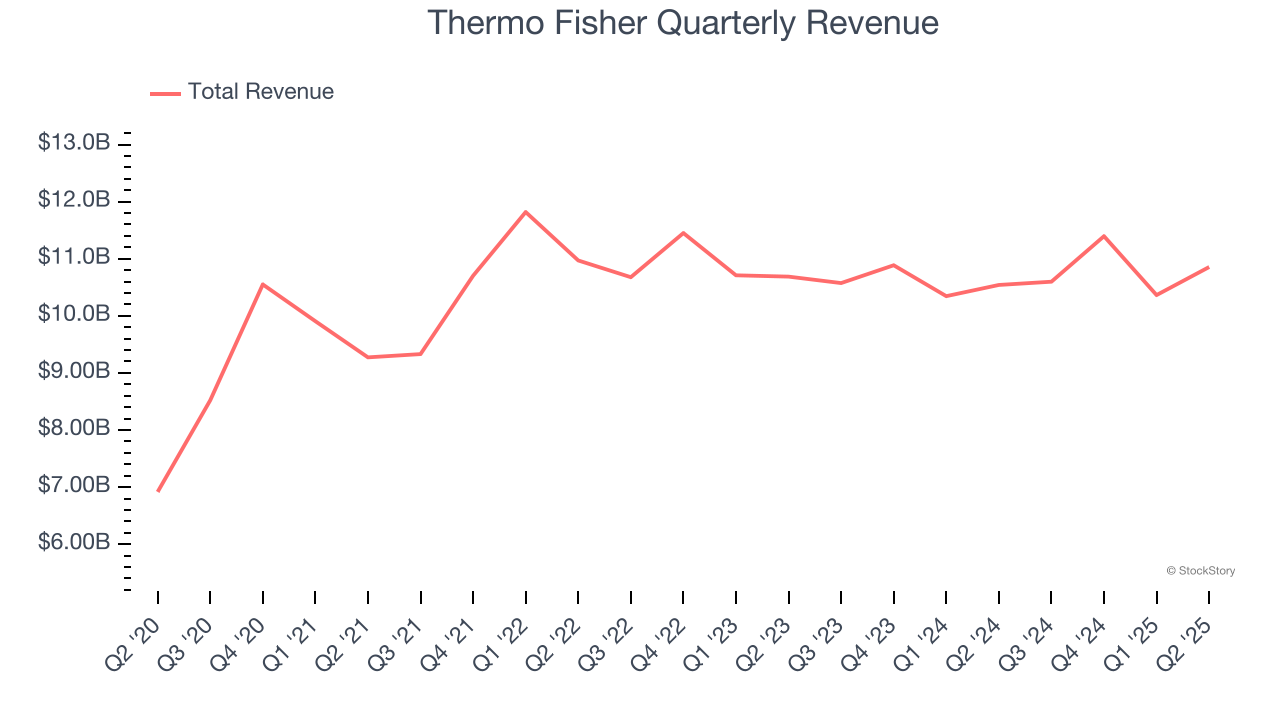
Long-term growth is the most important, but within healthcare, a half-decade historical view may miss new innovations or demand cycles. Thermo Fisher’s recent performance shows its demand has slowed as its revenue was flat over the last two years. 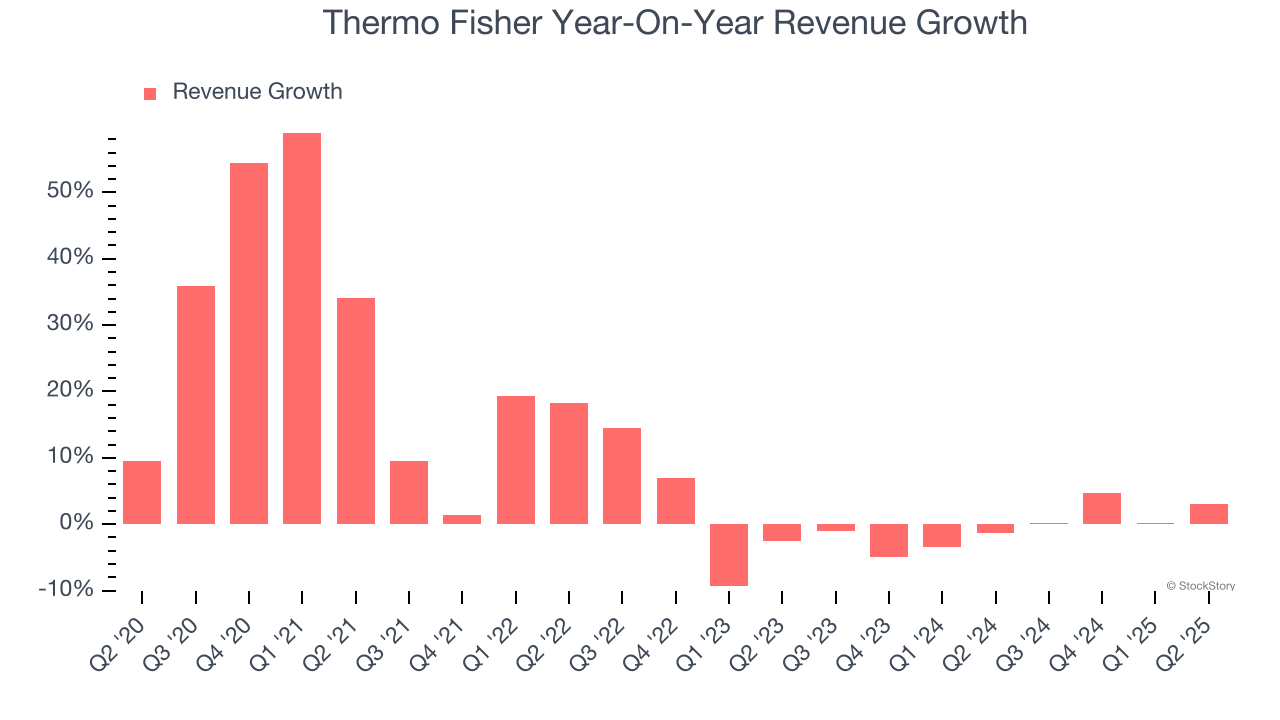
We can better understand the company’s sales dynamics by analyzing its organic revenue, which strips out one-time events like acquisitions and currency fluctuations that don’t accurately reflect its fundamentals. Over the last two years, Thermo Fisher’s organic revenue averaged 1% year-on-year declines. Because this number aligns with its normal revenue growth, we can see the company’s core operations (not acquisitions and divestitures) drove most of its results. 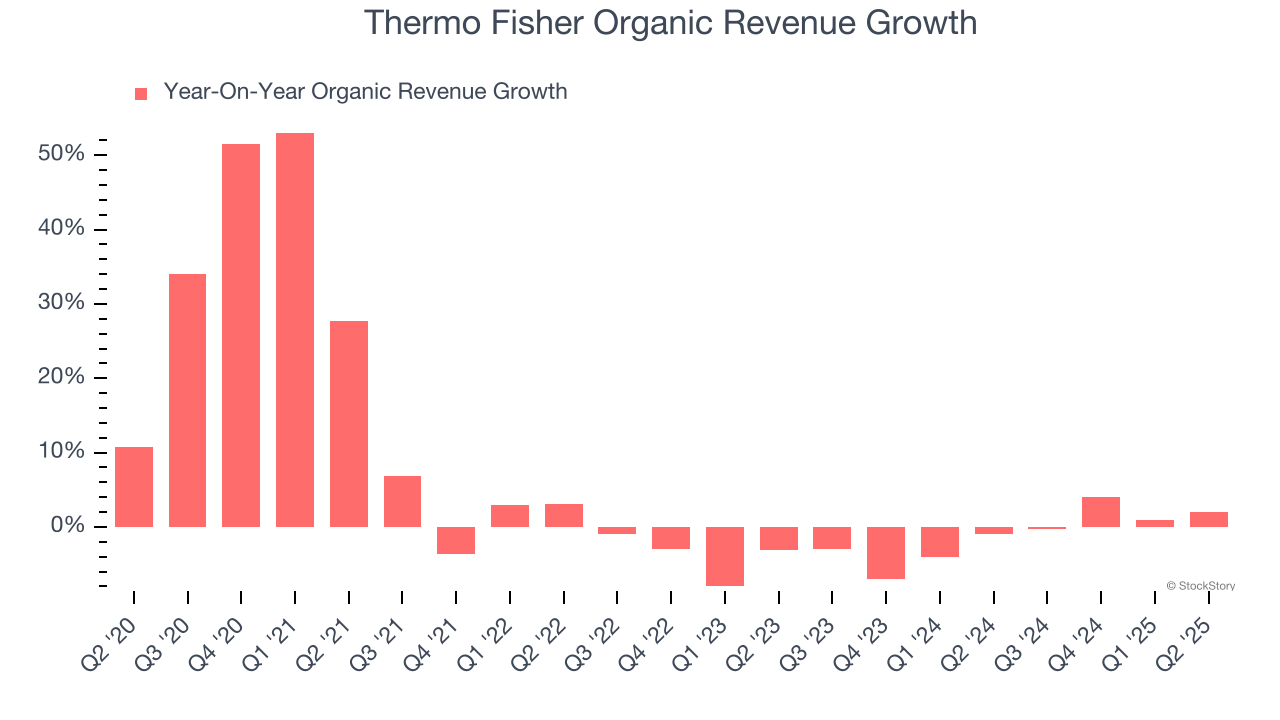
This quarter, Thermo Fisher reported modest year-on-year revenue growth of 3% but beat Wall Street’s estimates by 1.6%.
Looking ahead, sell-side analysts expect revenue to grow 3.9% over the next 12 months. While this projection implies its newer products and services will fuel better top-line performance, it is still below average for the sector.
Here at StockStory, we certainly understand the potential of thematic investing. Diverse winners from Microsoft (MSFT) to Alphabet (GOOG), Coca-Cola (KO) to Monster Beverage (MNST) could all have been identified as promising growth stories with a megatrend driving the growth. So, in that spirit, we’ve identified a relatively under-the-radar profitable growth stock benefiting from the rise of AI, available to you FREE via this link.
Operating Margin
Thermo Fisher has managed its cost base well over the last five years. It demonstrated solid profitability for a healthcare business, producing an average operating margin of 19.8%.
Looking at the trend in its profitability, Thermo Fisher’s operating margin decreased by 10.9 percentage points over the last five years, but it rose by 1.7 percentage points on a two-year basis. Still, shareholders will want to see Thermo Fisher become more profitable in the future.
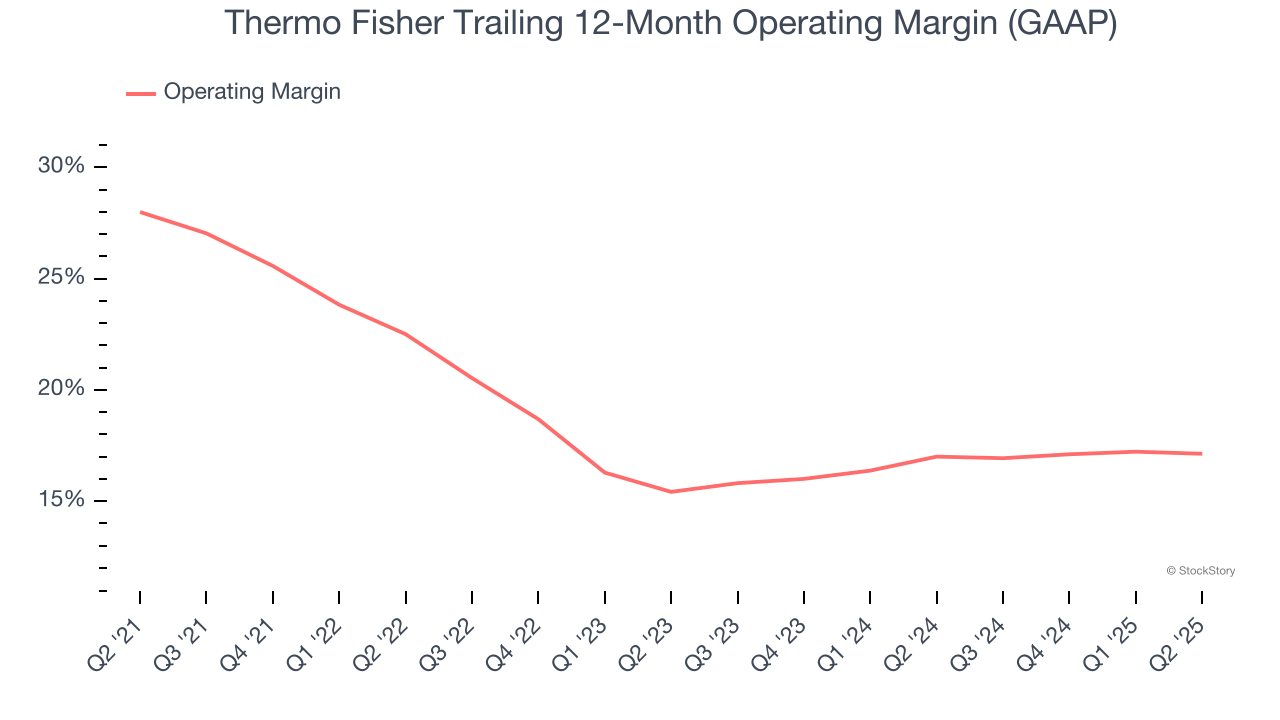
This quarter, Thermo Fisher generated an operating margin profit margin of 16.9%, in line with the same quarter last year. This indicates the company’s overall cost structure has been relatively stable.
Earnings Per Share
We track the long-term change in earnings per share (EPS) for the same reason as long-term revenue growth. Compared to revenue, however, EPS highlights whether a company’s growth is profitable.
Thermo Fisher’s remarkable 10.4% annual EPS growth over the last five years aligns with its revenue performance. This tells us it maintained its per-share profitability as it expanded.
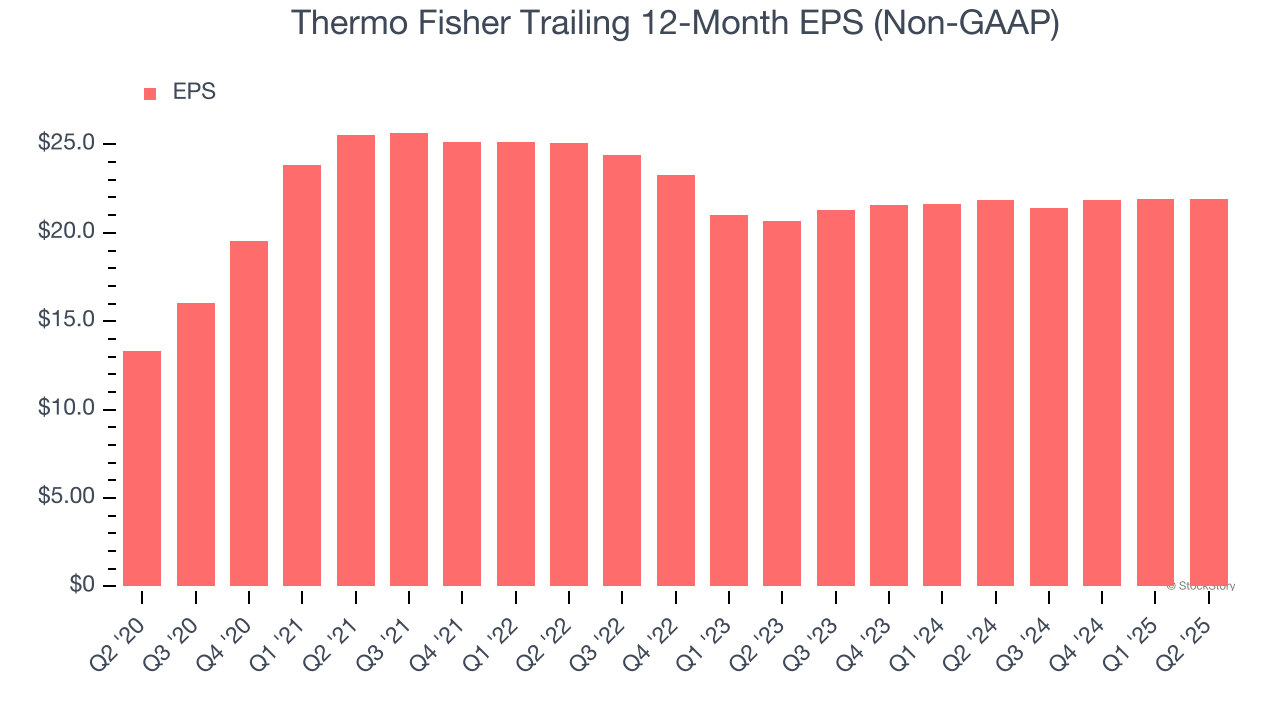
In Q2, Thermo Fisher reported EPS at $5.36, down from $5.37 in the same quarter last year. Despite falling year on year, this print beat analysts’ estimates by 2.3%. Over the next 12 months, Wall Street expects Thermo Fisher’s full-year EPS of $21.89 to grow 6.9%.
Key Takeaways from Thermo Fisher’s Q2 Results
It was good to see Thermo Fisher narrowly top analysts’ organic revenue expectations this quarter. We were also happy its revenue and EPS outperformed Wall Street’s estimates. Overall, this print had some key positives. The stock traded up 1.8% to $434.68 immediately following the results.
Thermo Fisher may have had a good quarter, but does that mean you should invest right now? When making that decision, it’s important to consider its valuation, business qualities, as well as what has happened in the latest quarter. We cover that in our actionable full research report which you can read here, it’s free.






